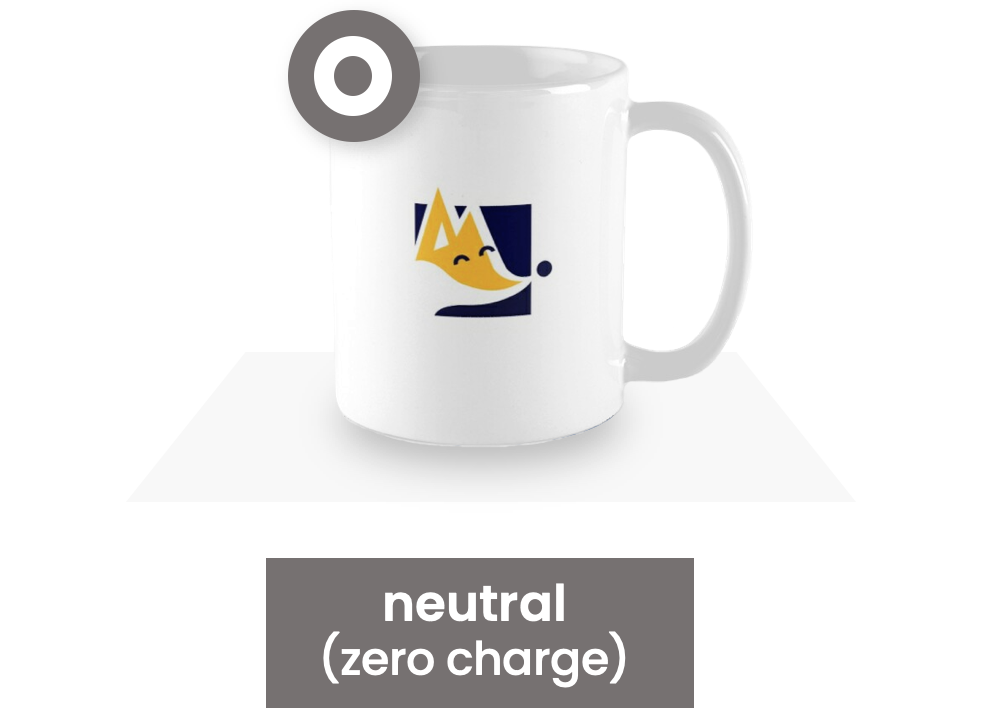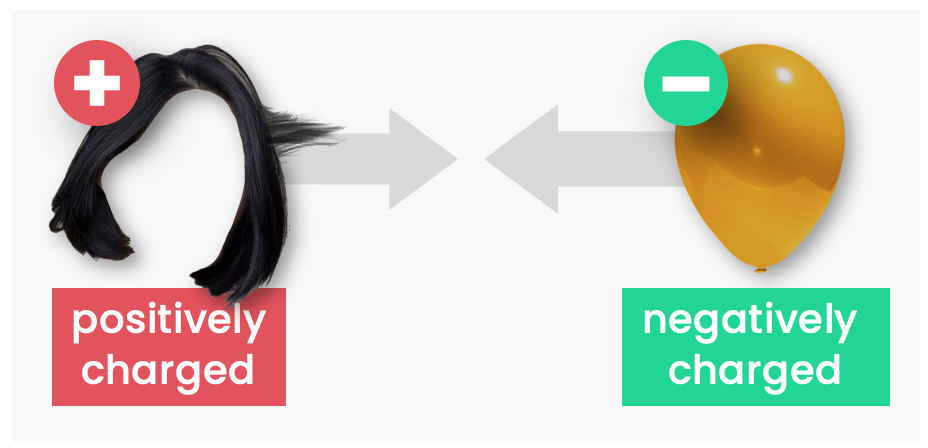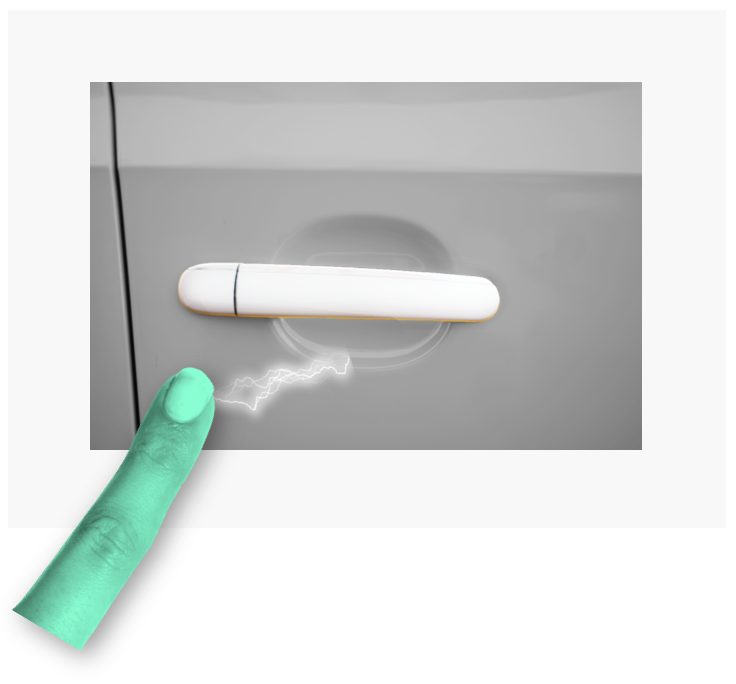Physics
Fox
Summary
- When two different insulators are rubbed together, electrons transfer from one insulator to the other.

- The insulator that has lost electrons is now positively-charged (+), and the insulator that has gained electrons is now negatively-charged (-). Therefore, we are left with a separated charge.

- Because of the electric force, the + and - insulators attract each other.

- When the insulators are moved close together, electrons will be so strongly attracted to the + insulator that they jump from the - insulator to the + insulator. When this happens, a spark can be seen. This is known as electrostatic discharge.

- This transfer can also occur when one of the insulators is moved close to a conductor.

She is electric
Can I be electric too?
Previously we mentioned how most of the things around us are neutral.

Like all objects, neutral objects are made of atoms. Atoms contain protons and electrons, which have a + and - charge. So neutral objects don't really contain zero charge: they contain loads of + and - charges that are perfectly balanced out!

Today we'll use this knowledge to understand how some neutral objects can turn into positive or negatively-charged objects. We'll also learn how this can cause electric shocks and lightning!

Neutral insulators can become charged via a simple technique: just rub them against each other!

For example, if a balloon is rubbed against your hair, the hair becomes positively-charged (+) and the balloon becomes negatively-charged (-).

Why does this happen? It is because some of the electrons from your hair are transferred to the balloon. Electrons are negatively-charged, so what was previously a balance of + and - charged in each insulator is now an imbalance. The insulator that lost electrons (the hair) has a positive charge, the insulator that gained electrons (the balloon) has a negative charge.
(Note that this only works when the insulators are different materials — rubbing your hair against someone else's hair will only transfer nits, not electrons.)
This might appear to be because of friction — the electrons 'fall off' one material, like dust when you rub something with sandpaper. However this isn't true: all you need is contact between the insulators. (if you attach sticky tape to an insulator and take it off, you will be left with separated charge — even though there wasn't any friction!)

We are now left with a positively-charged object in one place, and a negatively-charged object somewhere else. Therefore, we say there is a separated charge.
Because of the electric force, the + and - insulators attract each other. This is why your hair is pulled towards the balloon as you bring them together.

But that's not all! The balloon also sticks to any wall you put it on.

This seems strange: the wall is neutral, so how can there be an attraction?
This happens because electrons can move within materials — the negative balloon repels the nearest electrons in the wall, leaving the nearby area with a positive charge. The negative balloon is attracted to this positive region, so they stick together.


This also explains why the charged balloon can pick up any loose pieces of paper you have lying around. Although the paper pieces are neutral, the negative balloon repels electrons in the paper. The nearest part of each paper has a positive charge, so the paper and balloon are attracted together.
Note that when a material is charged, the charge is spread around the entire object. This is very noticeable when you build up a lot of charge, such as when going down a slide or touching a Van de Graaf generator. You become so charged that each individual hair on your head repels the other hairs (because like charges repel), so your hair goes spiky!

Image: American Museum of Science and Energy
The attraction between positively- and negatively-charged objects is stronger the closer they are together. You can see this by moving a charged balloon closer or further from your hair.
When this attraction is strong enough, electrons can be so strongly attracted to the + insulator that they jump from the - insulator to the + insulator. When this occurs, spark can be seen (and heard). This is known as electrostatic discharge.

This doesn't only happen between two charged insulators; it can also occur between a charged insulator and a conductor. You maybe have felt this as an electric shock when touching a car door or a metal doorknob. (In these cases, you were the charged insulator — this might be because you rubbed your socks along a carpet, or took off a jumper.)
These sparks are only a few centimetres long. However, in more extreme situations sparks can be kilometres long! This is the case for lightning, which is electrostatic discharge between a cloud and the ground.

The world's longest known lightning bolt was over 700 km long — roughly the distance between London and Frankfurt.
The phenomenon of separated charge is often called “static electricity”.
As mentioned previously, electricity is the flow of electrons. The word ‘static’ means not moving, therefore the phrase ‘static electricity’ means non-moving flow of electrons. But how can something flow without moving? It doesn't make any sense!
The use of this phrase often confuses people, which is why I have chosen to use the more straightforward and meaningful term ‘separated charge’ instead (inspired by this essay by William Beaty).
Congratulations!
6 of 6 questions completed
+ ⭐️ collected.
Sign up (for free!) to:
• save your progress 📊
• create constellations✨
• customise your fox! 🦊







